This classic French crème brûlée is a classic dessert made with cream, egg yolks, and vanilla custard and topped with burnt sugar. Make it ahead of time and serve for your next special occasion!
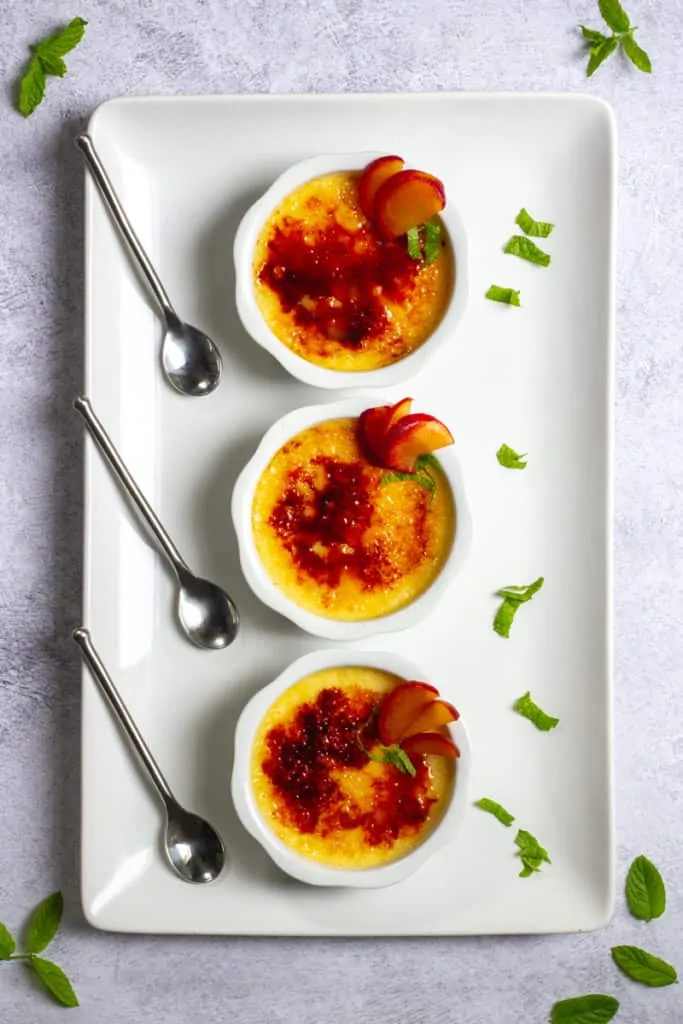
About ten years ago, my friend Charlotte gave me a recipe for French crème brûlée.
And guys, no matter how many different versions of crème brûlée I try, I always come back to Charlotte's version.
I've modified things slightly over the years, but this recipe is almost identical to the one she hand-wrote for me all those years ago.
Recently, I realized that even though I have a coconut crème brûlée and a lavender crème brûlée posted on the site, I'd never published the classic version.
So here it is!
This classic French crème brûlée is made with just a few ingredients, and is one of those desserts that feels very impressive despite being simple to prepare.
In this post, I'll walk you through how to prepare crème brûlée, plus tips on how to tweak this recipe to make it your own.
If you're looking for other classic French recipes, I also recommend checking out these recipes: fish meunière (fish in butter sauce), ratatouille, gratin dauphinois (scalloped potatoes) French onion soup, and French crêpes (or gluten-free crêpes or vegan crêpes).
What Equipment Do I Need?
The only thing you truly need are ramekins.
Ramekins are small, oven-safe dishes. They're basically tiny, individual-sized casserole dishes.
I've used both white porcelain ramekins and Pyrex ramekins, and both styles worked perfectly for this recipe.
You can also buy shallower crème brûlée dishes, meant to more closely mimic the classic French crème brûlée serving dishes.
You might also want to buy a butane kitchen torch.
If you don't have one, you can also use your oven's broiler. The broiler doesn't work quite as flawlessly, but it can let you see if you like making crème brûlée enough to buy a torch.
What's the Milk to Cream Ratio?
Some recipes call for all heavy cream, some call for all milk. The more cream you use, the richer the final dessert will be.
My preference is to use about ¾ cream and ¼ whole milk.
If you want to use a different ratio, you can. Just keep the total amount of liquid the same.
Can I Use Less Sugar?
I wouldn't.
There's not much sugar in the custard base to begin with, and you need the sugar on top to form the hard burnt sugar topping.
How Many Eggs Should I Use?
This is one area where crème brûlée recipes vary widely.
You'll find recipes that call for anywhere from three to six egg yolks.
Here's what you should know. The more egg yolks you add, the firmer your creamy base will be.
If you use three egg yolks, the creamy inside will be light and... well, creamy. With six egg yolks, it will be firmer, more like flan.
I opted for three egg yolks for this classic French crème brûlée recipe.
Why?
The lighter, creamier texture better matched my memory of eating crème brûlée in Paris.
And that seemed like a good enough reason for me.
How to Make Crème Brûlée
Start by bringing the cream and milk to a boil, and then immediately removing them from the heat.
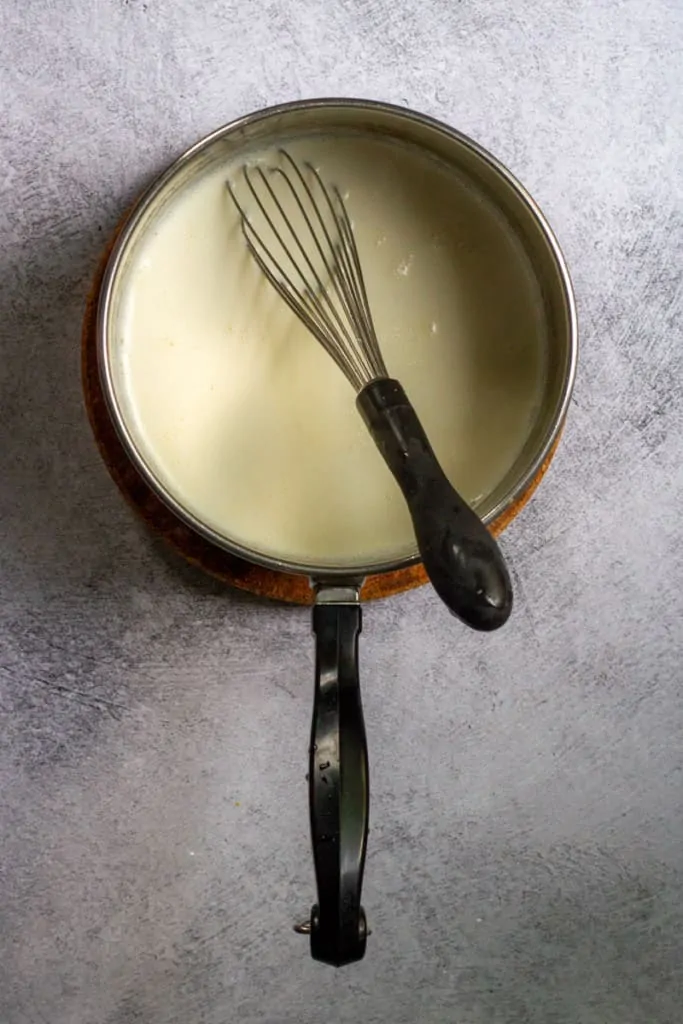
Next, whisk together the egg yolks, sugar, vanilla extract, and citrus zest.
You don't have to whisk for long, just until everything is mixed together.
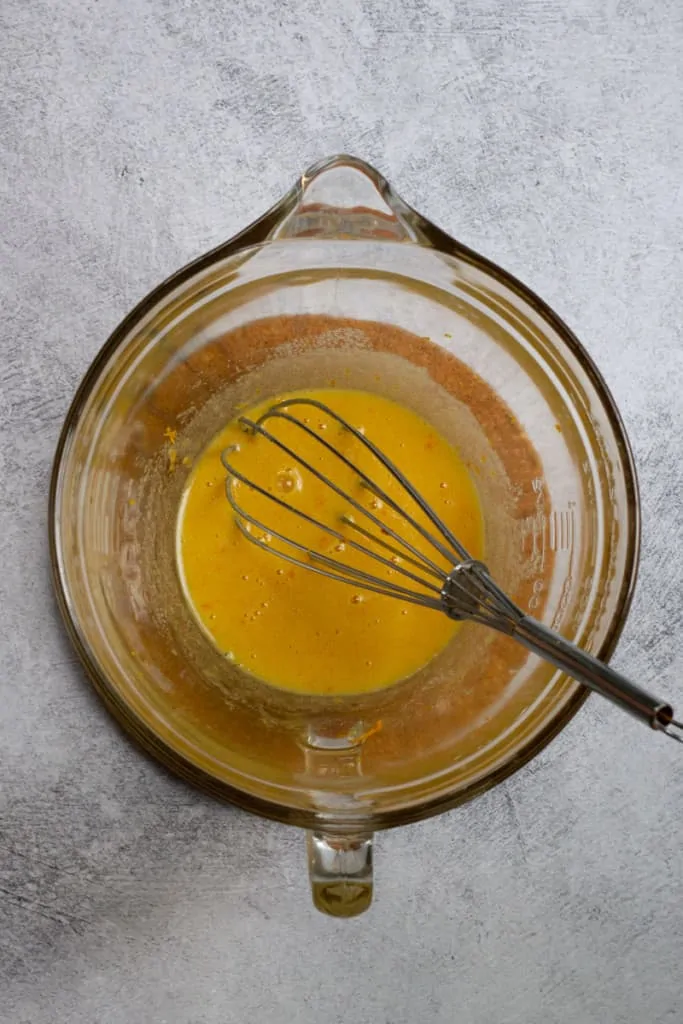
Slowly drizzle the warm milk into the egg yolk mixture, whisking constantly.
It's important to whisk rapidly while you pour the milk in, because it will cool the milk and keep it from cooking the eggs.
If you whisk constantly, you shouldn't have any problems with the eggs cooking. But if something goes wrong, simply strain out any scrambled eggs.
Continue whisking and pouring until you've added all the milk.
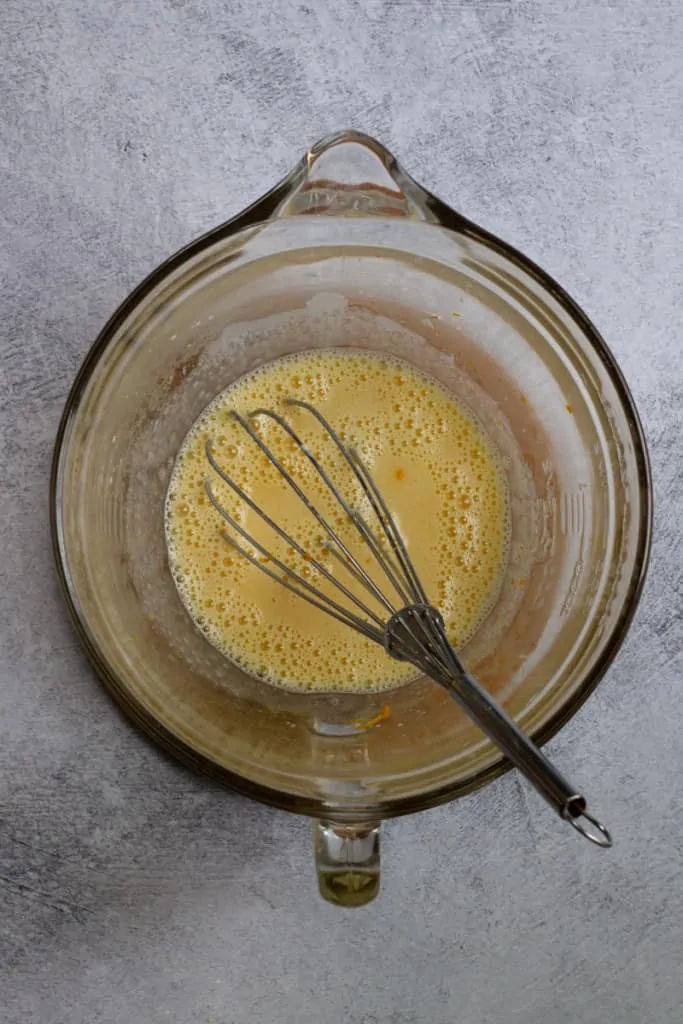
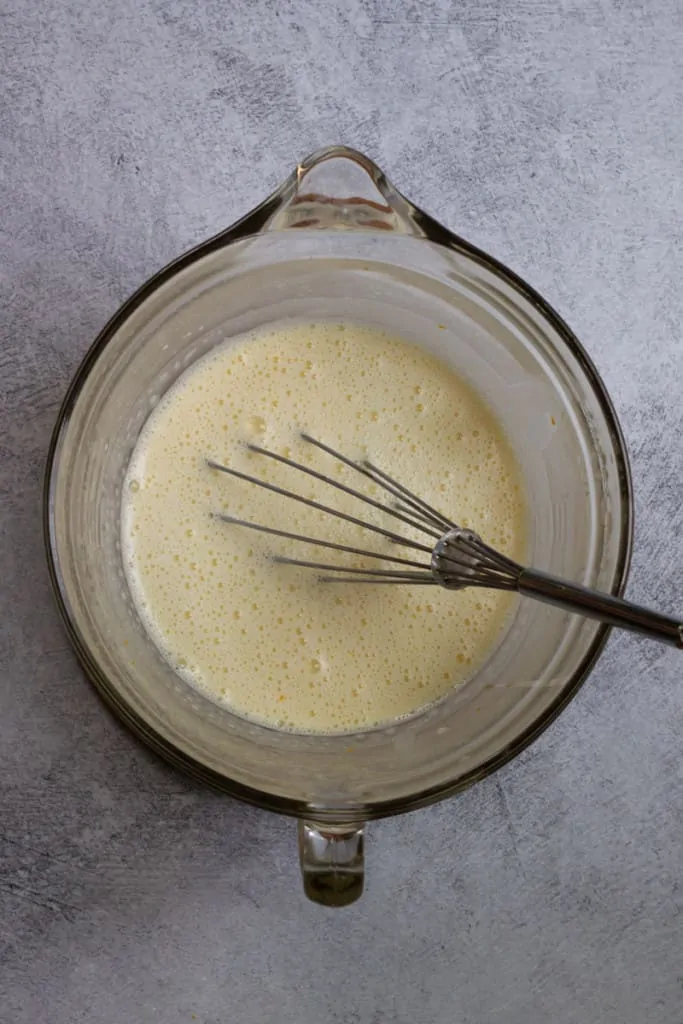
Set the ramekins inside a baking dish, and pour the egg mixture into your ramekins.
Carefully pour hot water into the baking dish around the ramekins. Make sure not to get water into the custard mixture.
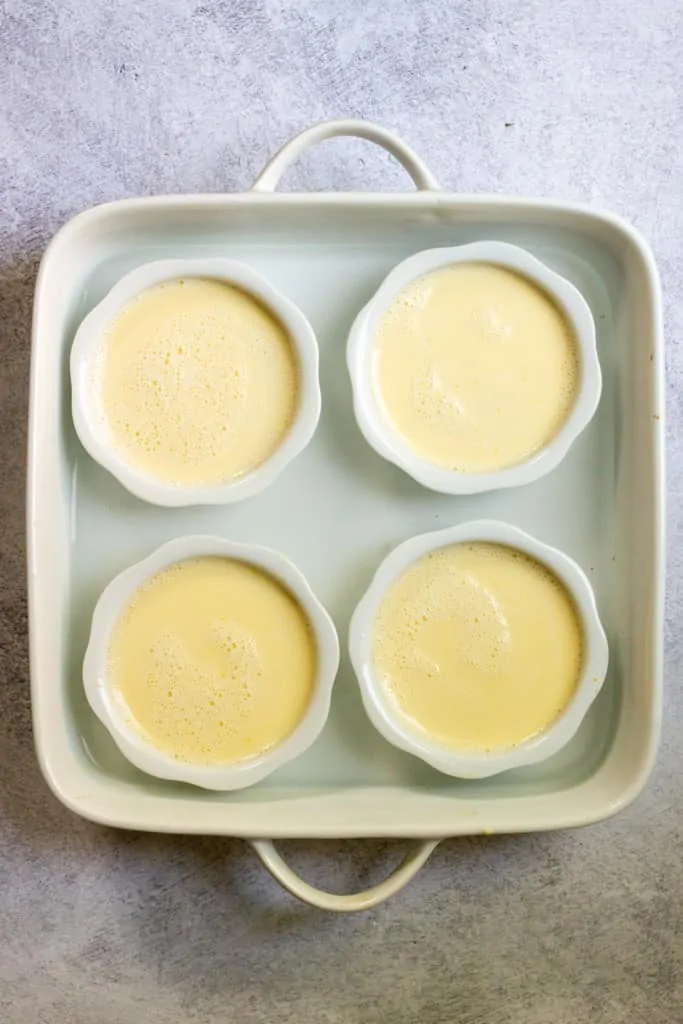
Very carefully slide the baking dish into the oven.
Bake the crème brûlée until the centers have set. You'll see areas around the edge of the custard that are not set, and that's fine.
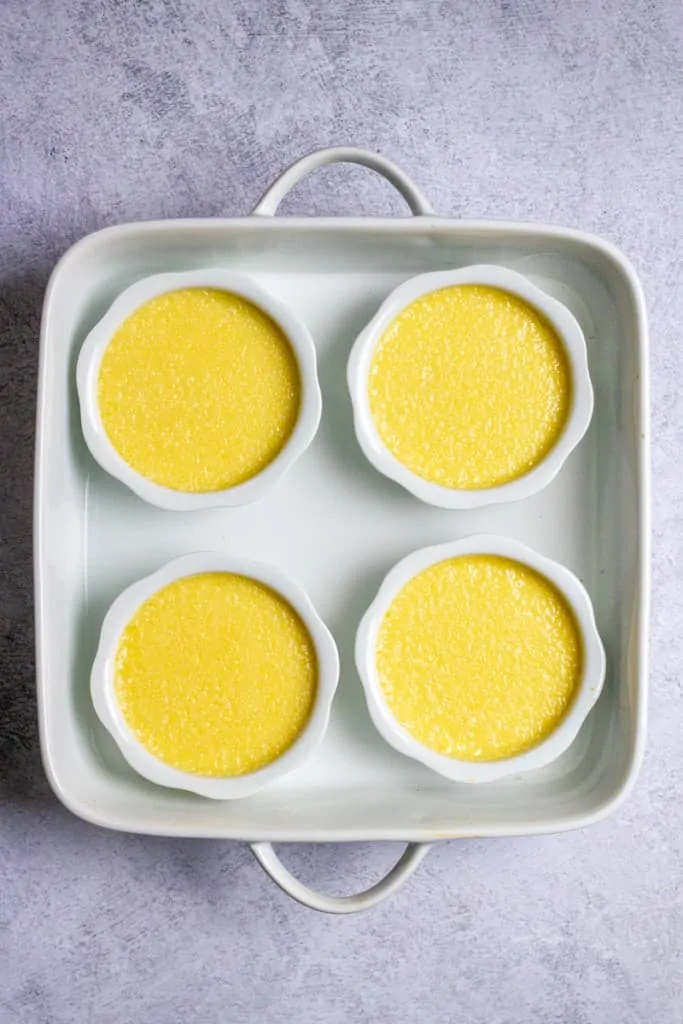
Next comes the hard part.
Waiting.
Remove the custards from the water bath, let them cool to room temperature, and then place them in the fridge to cool for several hours.
I like to let mine chill overnight.
It's important to let them completely chill, because the next step won't work correctly if the custard is warm.
How to Make the Burnt Sugar Topping for Crème Brûlée
Sprinkle about a tablespoon of sugar on each custard.
Try to spread the sugar out evenly.
Next, use a torch to burn the sugar. The sugar will darken and bubble up, and then you can stop torching it.
Within the next minute or two, your crème brûlée will form a hard, glassy sugar top.
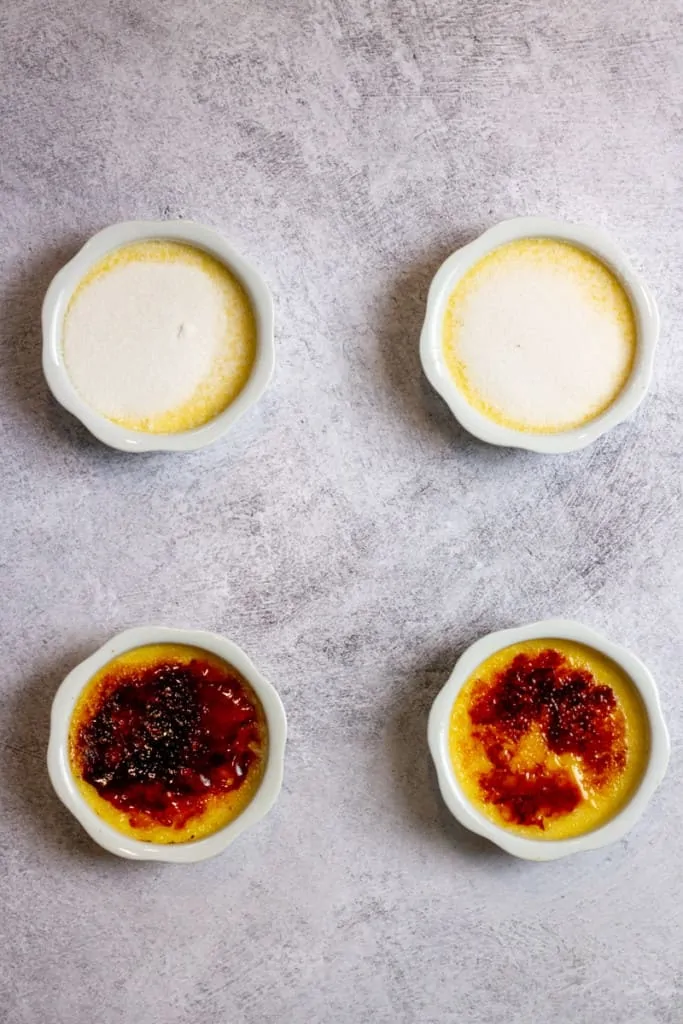
If you don't own a torch, check the recipe card for directions to use your oven broiler.
Serve the crème brûlées immediately while the tops are warm.
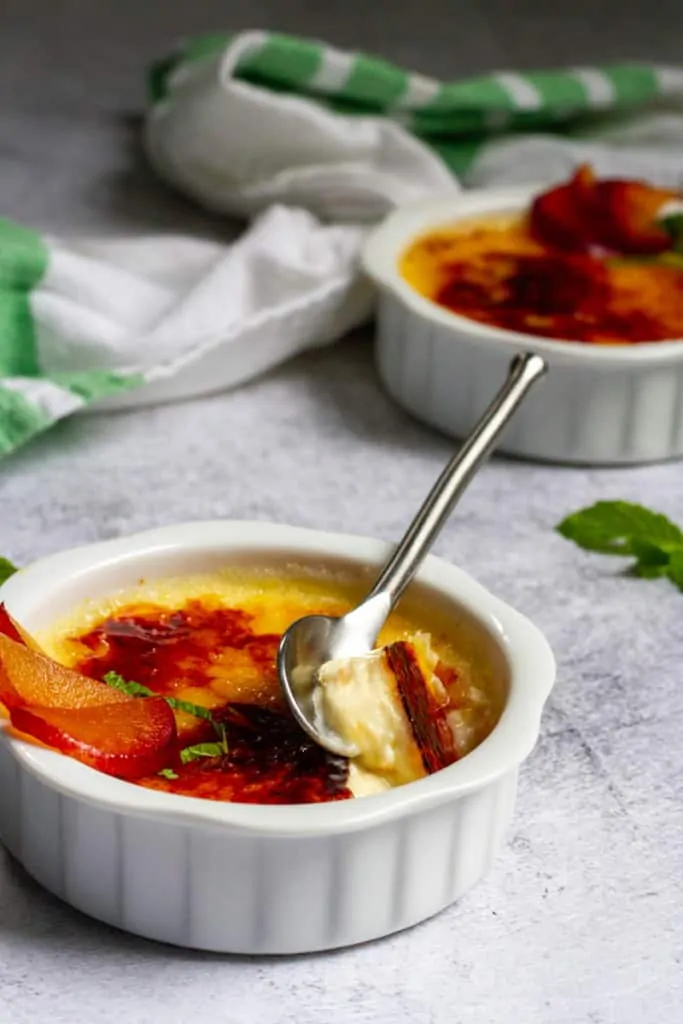
Use a spoon to crack the hard top, and then each bite will have warm, crackly sugar with the contrast of cold, creamy custard.
It is heavenly.
Serve the desserts along with a small cup of espresso, and enjoy!
French Crème Brûlée
Equipment
- 4 - 6 ramekins
Ingredients
Custard:
- 1 quart water for water bath (amount approximate)
- 1 ¼ cups heavy cream
- ½ cup whole milk
- 3 egg yolks
- ⅓ cup sugar
- 2 teaspoons vanilla extract
- 1 lemon or orange (zest only)
Topping:
- 4 tablespoons sugar (or more, use ~1 TB per ramekin)
- fresh berries or sliced stone-fruit (optional)
Instructions
- Preheat oven to 300ºF. Begin boiling water in a tea kettle (or in a small pot).Use a microplane grater to zest the lemon or orange. Take care to only remove the zest, and not the white pith.Add cream and milk to a pot and heat over medium heat. Bring to a boil and remove from heat.
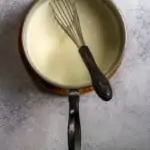
- In a large bowl, whisk together egg yolks, sugar, vanilla extract, and citrus zest. Whisk until combined but not airy.
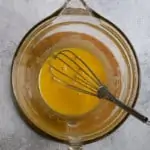
- Slowly begin whisking the warm milk into the egg mixture. As you pour, continue whisking constantly. (This will help keep the eggs from cooking.)
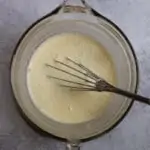
- Place 4-6 ramekins into a large baking dish. Divide the batter between the ramekins. Skim off any large bubbles.Carefully pour the hot water into the casserole dish, taking care not to splash water into the ramekins. Add water until the water-level reaches halfway up the ramekins.
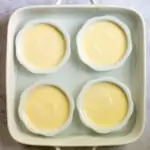
- Bake about 50-60 minutes, until the centers are set. If your ramekins are very shallow, begin checking on the custards after 35-40 minutes.Remove the custards from the baking dish and set aside to cool. Once they've reached room temperature, move the ramekins to the fridge.Chill for at least 3 hours or up to 2 days. (The sugar won't caramelize as well if the custard isn't cold.)
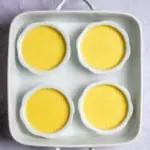
- Just before serving, sprinkle about 1 tablespoon of sugar evenly across the top of each custard.Torch method:Use a kitchen torch to burn the sugar by moving the torch slowly across each custard dish. The sugar will darken and bubble up. Allow the bubbles to subside and the sugar to harden before serving. The sugar will harden within just a minute or two.Broiler method:Optionally, set the custards in a shallow pan filled with ice. (This will keep the custard cold while broiling.)Move an oven rack to about 4" below the broiler, and preheat the broiler to high. Move the custards under the broiler, and watch carefully until the sugar browns and bubbles. The timing will depend on your oven. Gas broilers may work in seconds; electric broilers may take several minutes. Remove from the broiler immediately.
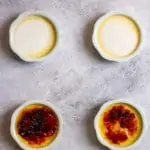
- Optionally, top with fresh berries or sliced stone fruit. Serve the crème brûlée immediately.
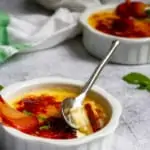


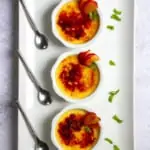
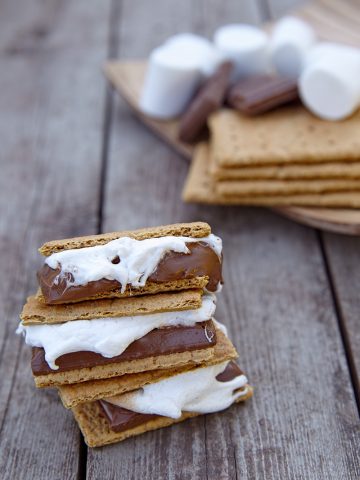
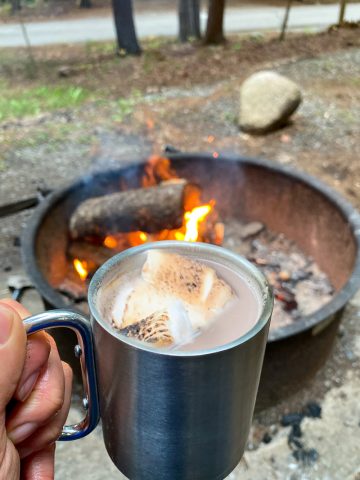
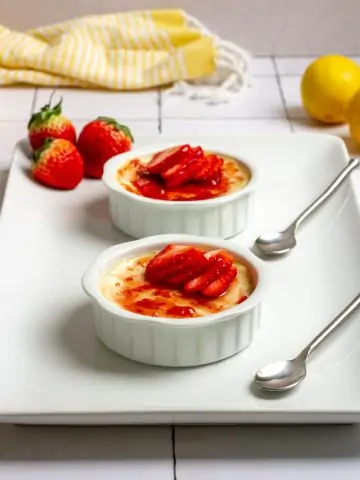
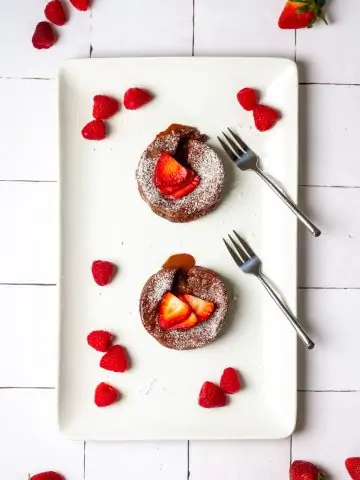
Leave a Comment: